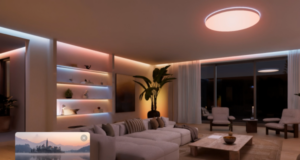
When designing or renovating a home, electrical outlets are one of those small details that make a big difference. Get the placement right, and your home will be more functional, efficient and easier to live in. Get it wrong, and you’ll be dealing with extension cords, cluttered benchtops or a constant shortage of places to plug in.
So, where should power points go—and how many do you really need? Here’s what you need to know to get it right the first time.
Start with how you live
Outlet placement should be guided by how you use each space, not just by what’s common. Think about your furniture layout, appliances, and how many devices you need to charge or run at once. Ask yourself questions like:
- Where will the TV or desk go?
- Do you need to charge phones on the bedside table?
- Will your kitchen bench need room for a toaster, coffee machine and blender?
It’s also worth thinking about future needs—adding a few extra outlets now is far cheaper than calling in an electrician later.
General positioning rules
Most power points in Australian homes are installed around 300mm above the finished floor level. But this isn’t set in stone. If you want better accessibility, especially for older occupants or people with mobility needs, consider raising them to between 600–1,000mm. For kitchen benches and laundry benches, outlets are typically installed 100–150mm above the benchtop.
All electrical installations must comply with AS/NZS 3000—the Australian standard for wiring and safety. That means avoiding risky placements like directly above cooktops or within wet zones, and ensuring all work is carried out by a licensed electrician.
Room-by-room guide
Living rooms and bedrooms
These rooms benefit from multiple, well-positioned outlets. In living areas, place outlets behind or near the entertainment unit (you’ll usually need at least three or four), in room corners for lamps or vacuums, and near any planned workstations or reading nooks.
In bedrooms, standard practice is to install outlets on either side of the bed, and an additional point near a dressing table or built-in wardrobe.
Kitchen
The kitchen is easily the most power-hungry room in the house. You’ll need outlets for both fixed and portable appliances, and they should be placed carefully for convenience and safety.
Position outlets:
- Above the benchtop for daily appliances like toasters and kettles
- Behind the fridge, oven, microwave or dishwasher (usually under the bench)
- Inside the pantry for charging stations or small appliances
Keep outlets at least 150mm away from sinks and cooktops to meet safety standards.
Bathroom
In bathrooms, outlet placement is tightly regulated. All power points must be RCD-protected, and they can’t be installed too close to the bath or shower.
Safe, common placements include beside or inside a mirrored cabinet or beside the vanity (not directly above the basin). These are handy for electric toothbrushes, hairdryers and shavers. Avoid placing outlets within 600mm of a shower or bath unless special conditions are met.
Laundry
The laundry typically needs outlets for the washing machine and dryer, plus one or two extras above the benchtop if you plan to plug in an iron or steamer.
For stacked washer/dryer units, make sure there’s a nearby outlet that can be accessed without moving appliances. Like kitchens and bathrooms, all outlets in laundries must be RCD-protected.
Home office
Home offices usually need more power than people expect. Allow for computers, monitors, chargers, printers and desk lamps—and consider placing outlets above desk height so you’re not crawling under furniture every time you need to plug something in.
A double or quad GPO is often the best solution for a desk setup. USB outlets are also handy in these areas.
Hallways
You might not think of a hallway as a place for outlets, but it’s helpful to include at least one in longer corridors to make vacuuming easier. A good rule of thumb is to allow one outlet for every 6–7m of wall space in circulation areas.
Outdoor areas
Outdoor outlets are essential for powering garden tools, BBQs, lighting or pool equipment. All outdoor outlets must be weatherproof, RCD-protected and installed using enclosures designed for exterior use. Common positions include under the eaves, beside outdoor kitchens, near sheds or in the carport.
If you’re planning to install an electric vehicle charger, talk to your electrician early to ensure there’s an adequate supply and space on your switchboard.
Avoiding common mistakes
It’s easy to underestimate how many outlets you’ll need—especially in high-use areas like kitchens, home offices or entertainment zones. Other common issues include:
- Placing outlets where furniture will block access
- Forgetting to include outlets in cupboards or pantries
- Failing to plan for future upgrades, like a wall-mounted TV or an electric car
A little extra planning during the design stage can save you costly changes later.
Final thoughts
Thoughtful placement of power outlets makes a big difference to how your home functions. By planning around how you actually live—and working with a licensed electrician—you can avoid common pitfalls and create a home that’s safer, more flexible and ready for modern life.





